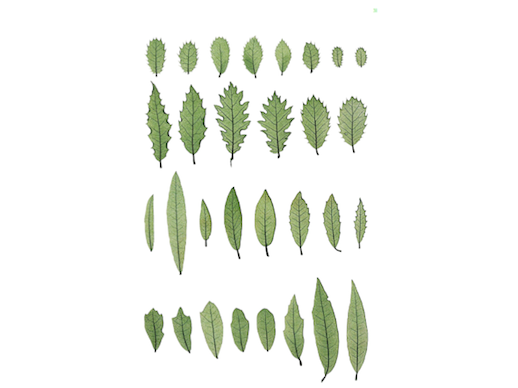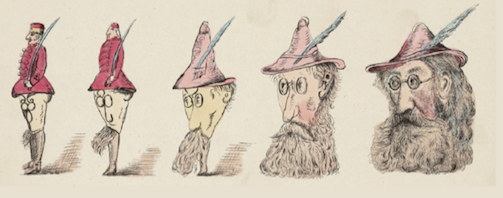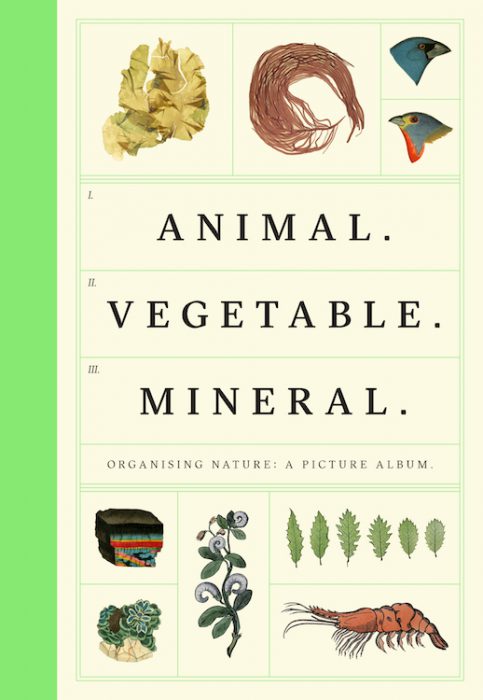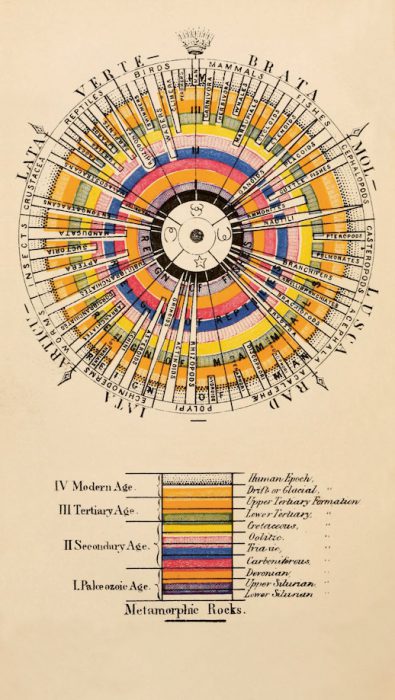Animal. Vegetable. Mineral. Organising Nature: A Picture Album
(Wellcome Trust, hardback, 112 pages. Out today and available here)
Review by Lara C. Cory
T.S. Eliot understood the profundity of names. In this poem he ponders the naming of cats in an amusing way, but ends his thoughts alluding to the notion of a Name as enigmatic and unknowable:
But above and beyond there’s still one name left over,
And that is the name that you never will guess;
The name that no human research can discover–
But THE CAT HIMSELF KNOWS, and will never confess.
When you notice a cat in profound meditation,
The reason, I tell you, is always the same:
His mind is engaged in a rapt contemplation
Of the thought, of the thought, of the thought of his name:
His ineffable effable
Effanineffable
Deep and inscrutable singular Name.
The power of a name is an idea that’s appeared again and again in our collective literary history. Authors have long been loyal to the axiom that once you reveal the true name of a being you indeed have power over it. Le Guin’s The Wizard of Earthsea, Tolkien’s The Hobbit, Grimm’s Rumpelstiltskin and even deeper into folklore with the Legend of Saint Olaf and the magical nix.
Dr. Morten Christiansen, professor of psychology and director of Cornell’s Cognitive Neuroscience Lab, believes that contrary to the fundamental principle that language systems are unlinked and arbitrary, words for basic concepts like body parts, family relationships and aspects of the natural world might actually possess some deeper meaning. Linguistic patterns that keep showing up in the 3,700 world languages reveal that some words share common sounds, as if perhaps there might be an intrinsic element to the naming of things. And it’s this notion that Tim Dee touches on in his excellent introduction to the Wellcome Collection’s latest publication Animal Vegetable Mineral – Organising Nature: A Picture Album.
Part of their Making Nature exhibition, Animal Vegetable Mineral is a small book about a big subject; the naming and organisation of the natural world. The contents, “Introduction, Mapping, Ordering, Comparing, Collecting & Displaying” might seem dry and in the hands of some it certainly can be. However, curator Honor Beddard has proved that with a curious spirit and a sense of humour, the subject of organising the natural world can be revealing, amusing and ultimately fascinating.
 Nature printed leaves, Alois Auer (c. 1853), Wellcome Library
Nature printed leaves, Alois Auer (c. 1853), Wellcome Library
Animal Vegetable Mineral feels more like a jumping off point, as opposed to a compendium of facts. Touching on the various ways we’ve organised our observations of the natural world – and perhaps created the illusion that we do indeed have power over it – the book doesn’t delve into any of the topics with much depth, instead providing a historical and pictorial overview. The imagery, colour and splendid design on display in this book make you wish the pages were larger to allow for a more in-depth and prolonged poring-over.  Evolution of household articles, animals etc. according to Darwin’s doctrine. Colour lithographs by Fr. Schmidt (Berlin, c. 1870), Wellcome Library.
Evolution of household articles, animals etc. according to Darwin’s doctrine. Colour lithographs by Fr. Schmidt (Berlin, c. 1870), Wellcome Library.
As it stands, this is a compact and charming companion to what will no doubt be a truly illuminating and provocative exhibition. Making Nature will run from 1 December 2016 – May 2017 and is part of a year-long exploration of our relationship with the natural world in the past, present and future.
*
Copies of Animal Vegetable Mineral can be found in the Caught by the River shop, priced £12.99.
Lara C.Cory on Caught by the River / on Twitter

